Panda bears are more than just adorable fluff balls—they’re a living wonder of nature. With their striking black and white fur and endearing personalities, these iconic animals have stolen our hearts. But behind those sweet eyes lies a fascinating creature with surprising traits.
Pandas are so much more than the playful, bamboo-munching stars of the animal kingdom. They have a unique diet, incredible adaptability, and behaviors that continue to amaze researchers and animal lovers alike. From their unusual eating habits to their unexpected talents, there’s much more to pandas than their cuddly appearance suggests.
Ready to be captivated by these remarkable creatures? Let’s dive into 19 fun and surprising facts about panda bears that will make you fall even more in love with these lovable giants.
Fact 1: Bamboo Lovers

Pandas primarily eat bamboo, making it 99% of their diet. They consume 26 to 84 pounds daily due to bamboo’s low nutritional value. Surprisingly, their digestive system resembles that of a carnivore.
Despite this, they have adapted to process bamboo efficiently, thanks to a special wrist bone functioning like a thumb. This unique trait assists in gripping bamboo stalks.
Pandas spend around 12 hours daily foraging and eating, a testament to their commitment to this singular diet. Observing a panda leisurely munching on bamboo offers a glimpse into their peaceful, focused lifestyle, deeply connected to nature.
Fact 2: Ancient Origins
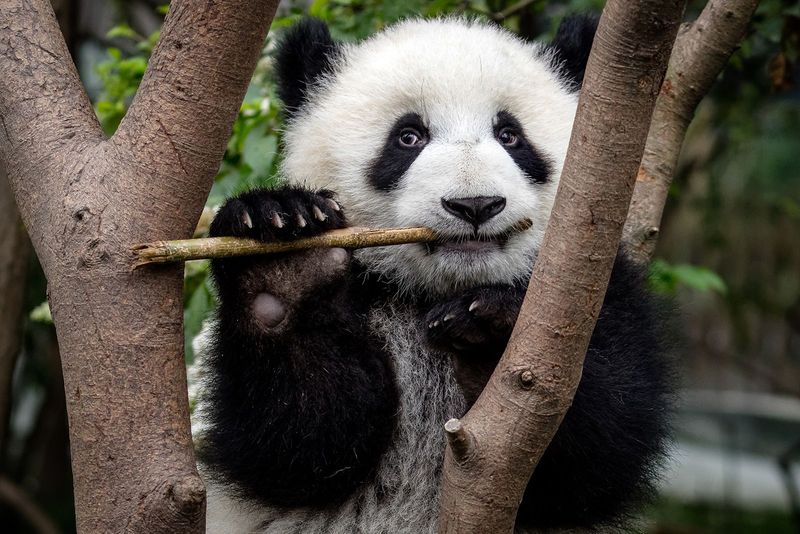
Pandas have roamed the Earth for over two million years. Fossil records reveal that these beloved creatures once lived across vast areas, including parts of present-day China, Myanmar, and Vietnam.
Their lineage traces back to the Miocene era, highlighting their resilience through geological changes and climate shifts. Despite their ancient roots, pandas have retained their distinctive characteristics, adapting to survive through the ages.
This long history contributes to their mystique, making them living relics of the past. Understanding their origins gives insight into their evolution and the environmental changes they have endured.
Fact 3: Solitary Creatures
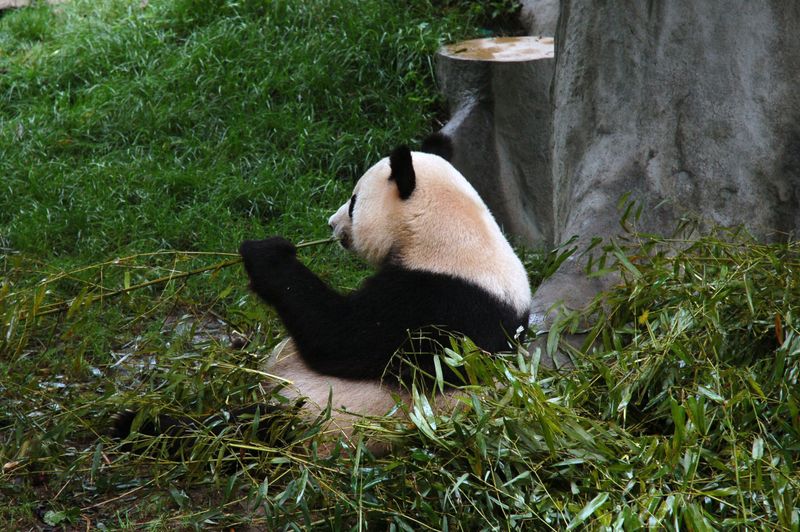
Pandas are solitary animals, preferring to live alone most of the time. They establish a “home range” where they roam and forage, using scent markings to communicate with others.
This solitary nature is due to their bamboo diet, which requires ample resources for each individual. Occasionally, pandas interact during mating season, or when a mother raises her cub.
These interactions are brief, emphasizing their preference for solitude. Observing a panda in its natural habitat reveals its independent spirit and self-reliant lifestyle, traits that define its unique way of life in the wild.
Fact 4: Vocal Communication

Despite their solitary nature, pandas communicate using a range of vocalizations, each serving a purpose. They can bleat like a goat, honk, bark, or growl, with each sound conveying specific emotions or intentions.
These vocalizations are essential during mating season or when cubs are involved. Pandas also use scent markings to augment these vocal cues, creating a complex communication system.
Understanding these sounds offers insights into their social behaviors and interactions. Their ability to communicate vocally, despite their solitary tendencies, highlights their adaptability and intricate social dynamics within their species.
Fact 5: Colorful Coat
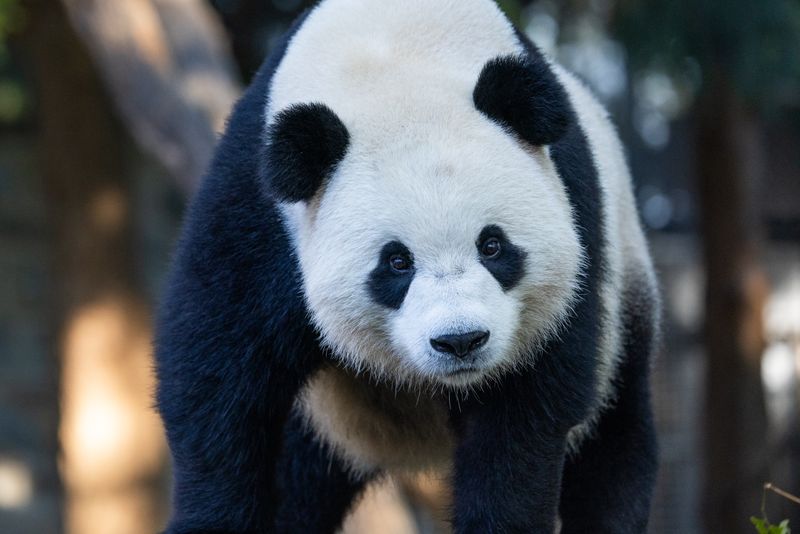
The panda’s striking black and white coat serves multiple purposes. The white fur helps them blend into snowy environments, while the black patches on their eyes and ears might aid in communication and camouflage within dense forests.
This coloration is also thought to help regulate their body temperature. Their unique appearance has fascinated scientists and animal lovers alike, symbolizing conservation efforts globally.
The panda’s coat is not just about aesthetics; it plays a crucial role in their survival. This iconic look has made them one of the most recognizable animals, inspiring countless stories and cultural references.
Fact 6: Playful Nature

Pandas are known for their playful behavior, often seen climbing trees, rolling in the grass, or play-fighting with each other. This playful nature is more than mere entertainment; it helps young pandas develop essential skills for survival.
Playful interactions also strengthen social bonds and help relieve stress. Observing panda cubs engaging in playful antics provides a heartwarming glimpse into their social world.
Their playful disposition endears them to humans, reflecting their gentle and amiable nature. Through play, pandas navigate their complex environment, learning and adapting to the challenges of their wild existence.
Fact 7: Powerful Climbers
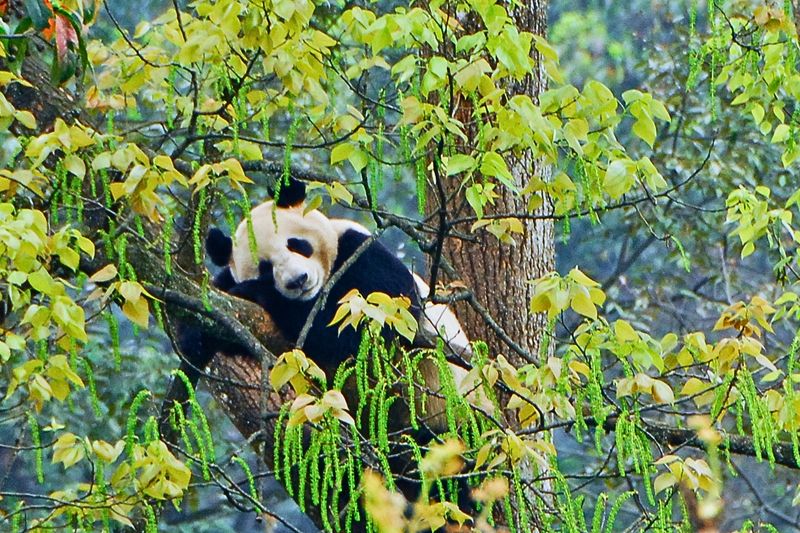
Despite their bulky appearance, pandas are excellent climbers. Their sharp claws and strong limbs enable them to scale trees with ease. Climbing is a vital skill for pandas, particularly for young cubs seeking safety from predators.
It also aids in foraging for food and expanding their territory. Observing a panda climb reveals its impressive agility and strength, traits that are essential for its survival in the wild.
This ability to climb showcases their adaptability and resilience, allowing them to navigate their forested habitats effectively. The sight of a panda perched high in a tree is truly awe-inspiring.
Fact 8: Unique Thumbs

Pandas possess a unique adaptation in the form of a “pseudo-thumb,” an extended wrist bone that functions like a thumb. This anatomical feature allows them to grasp bamboo stalks efficiently, a crucial adaptation for their bamboo-rich diet.
The pseudo-thumb gives pandas the dexterity needed to strip leaves and consume the plant’s fibrous content. This evolutionary trait highlights their specialization in a bamboo-centric lifestyle.
Observing a panda using its pseudo-thumb is a testament to nature’s ingenuity, showcasing the intricate relationship between anatomy and survival. This feature sets them apart from other bear species, emphasizing their uniqueness.
Fact 9: Water Lovers
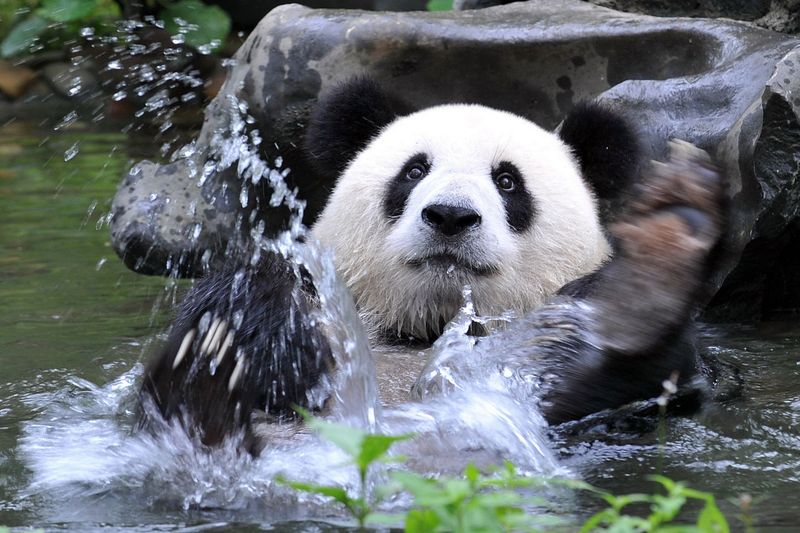
Pandas have an affinity for water and are often found near streams and rivers in their natural habitat. They are fond of playing and bathing in water, especially during warmer months.
This behavior helps them regulate their body temperature and stay cool. It also provides an opportunity for play and relaxation, contributing to their overall well-being.
Observing a panda in water reveals a playful side, as they splash and enjoy the refreshing environment. This love for water complements their forested home, offering a glimpse into their multifaceted lifestyle. Pandas’ aquatic antics add to their charm and appeal.
Fact 10: Remarkable Memory
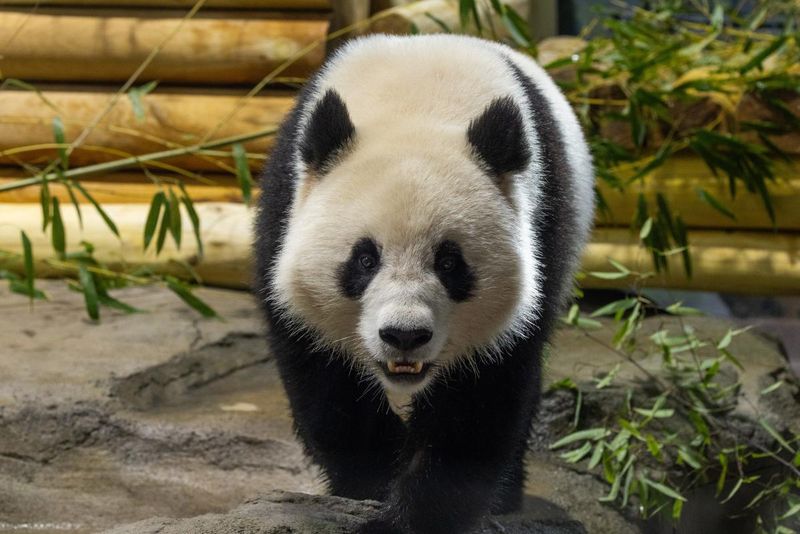
Pandas are known to have good memory and the ability to remember specific locations and individuals within their territory. This skill is vital for navigating their complex environment and efficiently finding food and shelter.
Their memory aids in recognizing familiar territories and adapting to seasonal changes. This cognitive ability reflects their intelligence and adaptability, allowing them to thrive in the wild.
Observing a panda’s actions and interactions offers insights into their mental capabilities, showcasing a surprising depth of understanding. Their remarkable memory plays a key role in their survival, guiding their daily activities and decisions.
Fact 11: Conservation Icons

Pandas have become global symbols of wildlife conservation. Their distinctive appearance and vulnerability have made them the face of numerous environmental campaigns.
Efforts to protect pandas have led to the establishment of reserves and breeding programs, helping to increase their population. These initiatives highlight the importance of preserving biodiversity and habitats.
The panda’s role as a conservation icon underscores the need for global cooperation to protect endangered species. Their plight and recovery efforts inspire action and awareness, fostering a greater appreciation for wildlife conservation. Pandas continue to play a pivotal role in environmental advocacy.
Fact 12: Distinctive Eyes
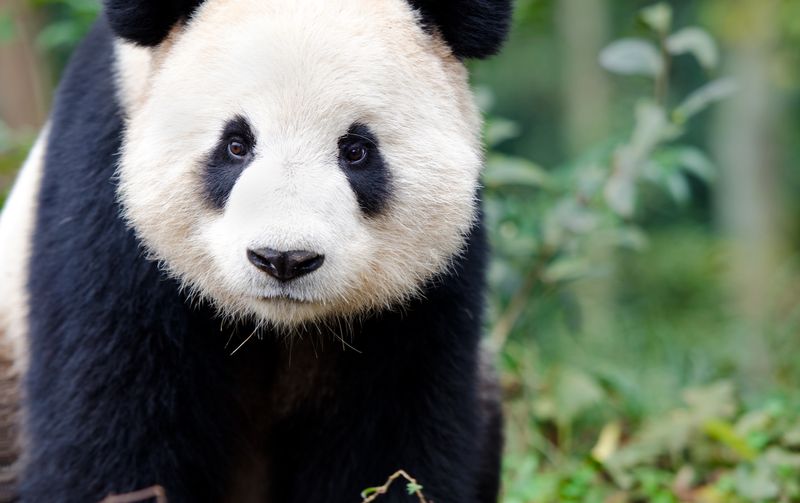
Pandas have distinctive eye patches that are thought to serve several purposes. These markings may help in communication, allowing pandas to convey expressions and emotions.
The eye patches are also believed to play a role in camouflage, breaking up their facial outline in dense forests. This unique feature adds to their charming appearance, making them instantly recognizable.
Observing a panda’s eyes provides a glimpse into their social interactions and emotional depth. Their eye patches are more than just a visual trait; they are integral to their identity and survival. They continue to captivate researchers and admirers alike.
Fact 13: Gentle Giants

Despite their size, pandas are known for their gentle demeanor. They rarely show aggression, preferring peaceful interactions with their environment and each other.
This gentle nature is evident in their interactions with cubs, displaying nurturing and protective behaviors. Pandas’ calm temperament extends to their interactions with humans, often exhibiting curiosity without hostility. Their gentle disposition has endeared them to people worldwide, symbolizing peace and harmony.
Observing a panda’s gentle behavior offers insights into its character and social dynamics. Their peaceful existence in the wild serves as a reminder of the beauty of coexistence with nature.
Fact 14: Slow Reproduction
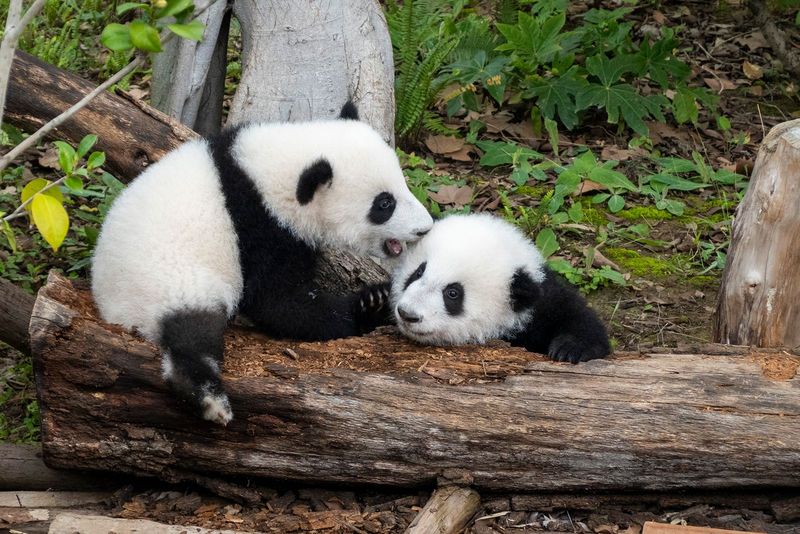
Pandas reproduce slowly, contributing to their vulnerable status. Female pandas are only fertile for a few days each year, making mating opportunities limited. After a gestation period of about five months, they typically give birth to one or two cubs.
The cubs are born tiny and vulnerable, requiring extensive maternal care. This slow reproductive cycle poses challenges for population growth, emphasizing the importance of conservation efforts.
Observing a panda mother and her cub showcases the delicate balance of life and the intricate care involved in nurturing new generations. Their slow reproduction highlights the need for protective measures.
Fact 15: Fascinating Teeth
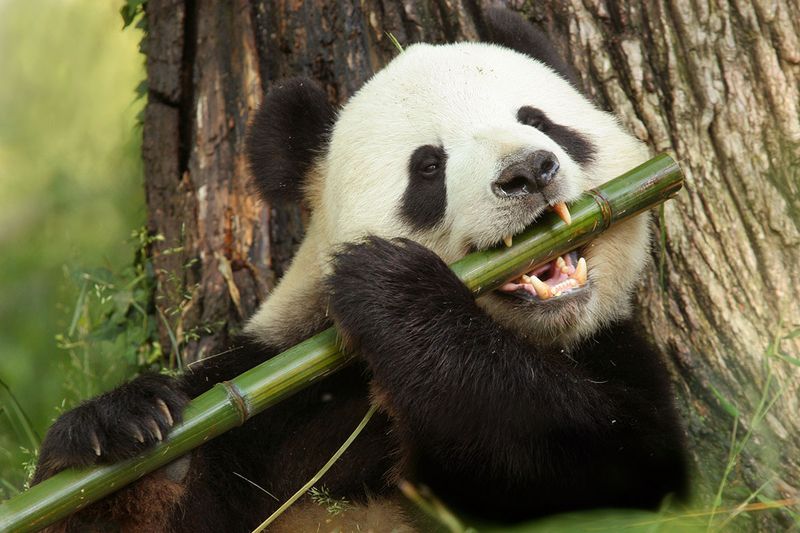
Pandas have large, strong teeth designed to crush bamboo stalks. Their molars are broad and flat, suitable for grinding fibrous bamboo into digestible pieces.
This dental structure complements their bamboo-centric diet, allowing them to consume large quantities efficiently. The robustness of their teeth reflects their specialized adaptation to their primary food source. Observing a panda eating reveals the intricate relationship between their dental anatomy and dietary needs.
Their fascinating teeth serve as a prime example of evolutionary adaptation, showcasing the profound connection between physical traits and survival strategies. This unique feature underscores their specialization in bamboo consumption.
Fact 16: Seasonal Movements
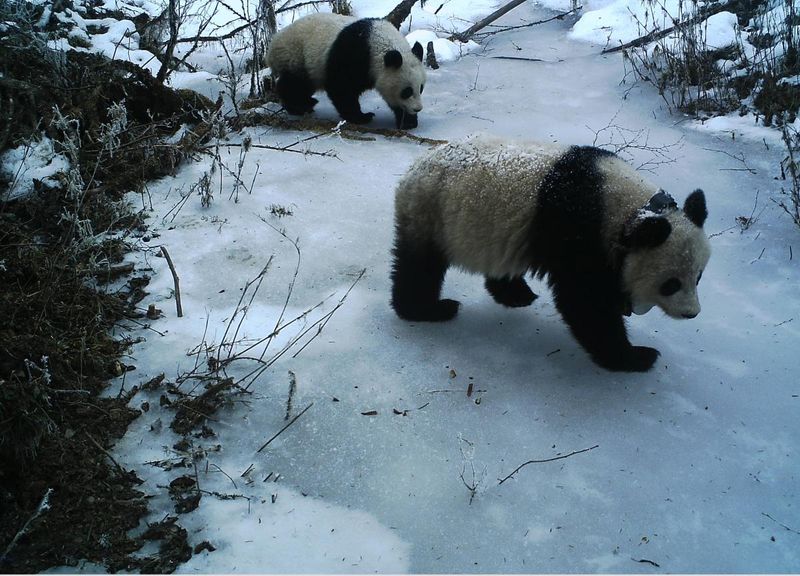
Pandas engage in seasonal movements to adapt to changing climates and food availability. They may travel to higher elevations during warmer months to find cooler habitats.
These movements ensure access to fresh bamboo and suitable living conditions. This seasonal adaptability highlights their ability to respond to environmental changes, showcasing their resilience. Observing a panda’s seasonal movements provides insight into their adaptive strategies and survival instincts.
These movements are essential for maintaining their well-being, ensuring they thrive despite environmental fluctuations. The sight of pandas navigating their ever-changing landscape is a testament to their enduring spirit and resourcefulness.
Fact 17: Cultural Significance

Pandas hold a special place in Chinese culture, symbolizing peace, friendship, and harmony. They have been featured in art, folklore, and as diplomatic gifts, known as “panda diplomacy.”
This cultural significance reflects their revered status and the admiration they inspire. The panda’s presence in cultural narratives emphasizes their role as symbols of goodwill and unity.
Observing pandas in art and cultural settings provides a deeper understanding of their impact on human society. Their cultural importance extends beyond biological aspects, highlighting their influence in fostering connections and understanding between nations.
Fact 18: Cub Development
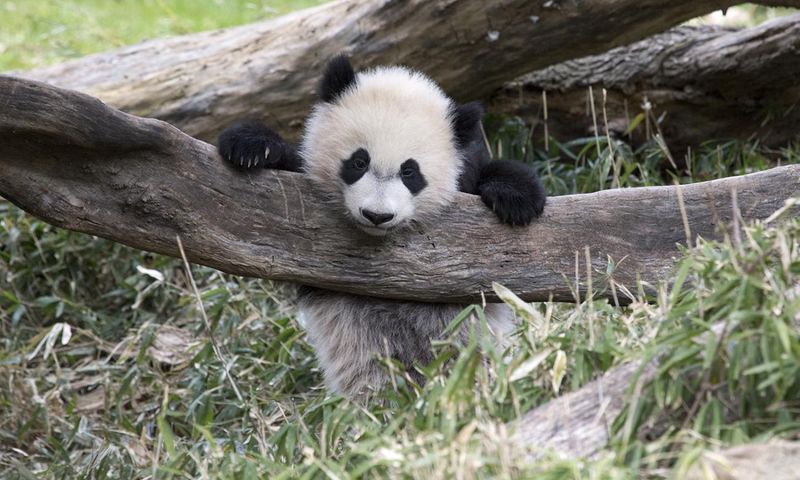
Panda cubs undergo a remarkable transformation from birth to maturity. They are born blind and tiny, weighing only a few ounces. Over the months, they grow rapidly, developing the iconic black and white markings and playful behavior.
This growth period involves learning essential survival skills from their mother, including foraging and climbing. Observing panda cubs’ development offers insights into their learning processes and adaptive behaviors.
Their journey from vulnerable infants to independent juveniles showcases the intricate balance of nurturing and exploration. Panda cub development is a testament to the species’ resilience and the wonders of nature’s design.
Fact 19: Global Ambassadors

Pandas serve as global ambassadors for wildlife conservation, inspiring efforts to protect endangered species worldwide. Their presence in international zoos fosters awareness and appreciation for biodiversity.
Conservation programs involving pandas highlight the importance of international collaboration in preserving wildlife. These efforts have led to successful breeding programs and increased populations, offering hope for other endangered species. Observing pandas in zoos provides a unique opportunity to learn about their natural habitats and challenges.
Their role as global ambassadors underscores the interconnectedness of ecosystems and the shared responsibility to protect our planet’s diverse life forms.

